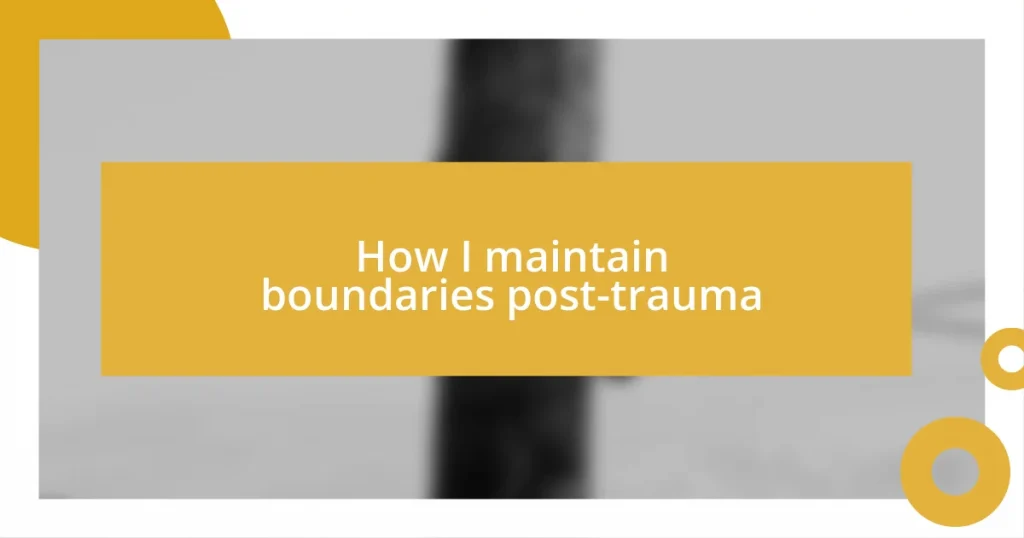Key takeaways:
- Understanding the impact of trauma on boundaries helps reclaim safety and control through clear communication and assertiveness.
- Recognizing personal limits and identifying triggers can enhance self-awareness and support the establishment of healthy boundaries.
- Seeking professional support fosters growth by providing coping strategies and reinforcing self-compassion, aiding in boundary maintenance.
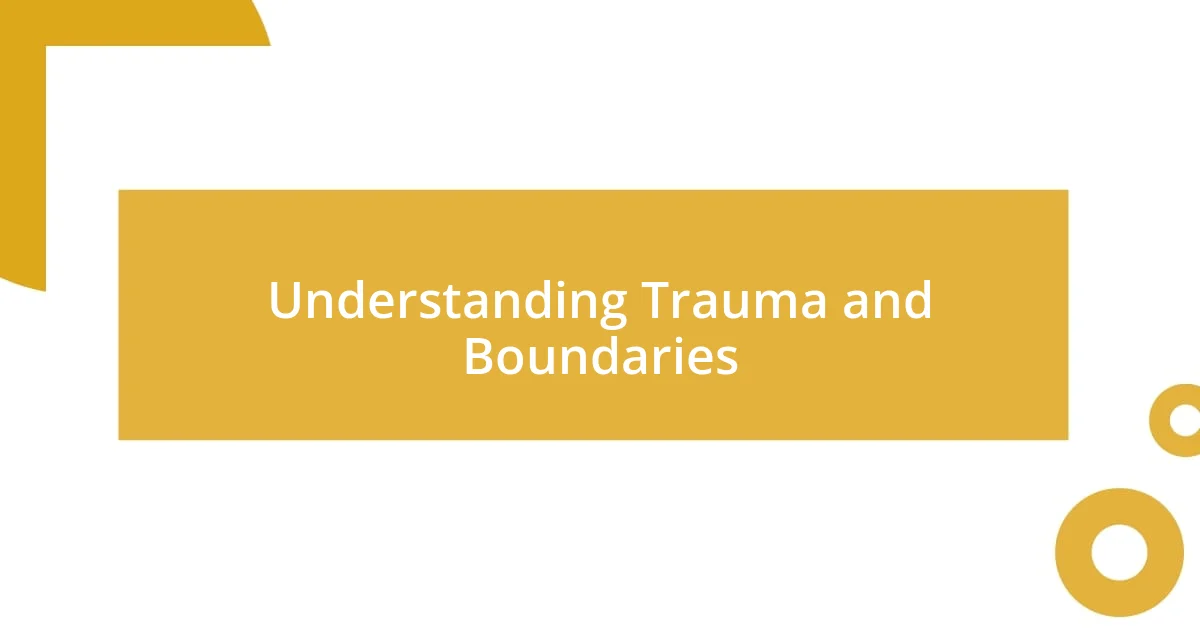
Understanding Trauma and Boundaries
Trauma can deeply affect how we perceive and maintain boundaries. I remember when I first realized that my past experiences made me more susceptible to others overstepping my comfort zone. Have you ever felt that tug of anxiety when someone gets too close? It’s a common response that often stems from the fear of being vulnerable or hurt again.
Understanding this connection is crucial. For me, setting boundaries became a way to reclaim my sense of safety and control. It was like learning to build a protective wall that allowed me to feel secure while still engaging with the world around me. Have you considered what boundaries might look like for you, especially in the wake of trauma?
Once I recognized the impact of trauma on my relationships, I learned that clear communication is key. I often reflect on how I felt when I could assert my needs for the first time; it was empowering, yet nerve-wracking. What happens, though, when we don’t articulate our boundaries? The reality is, maintaining them can be a significant act of self-care and a step towards healing.
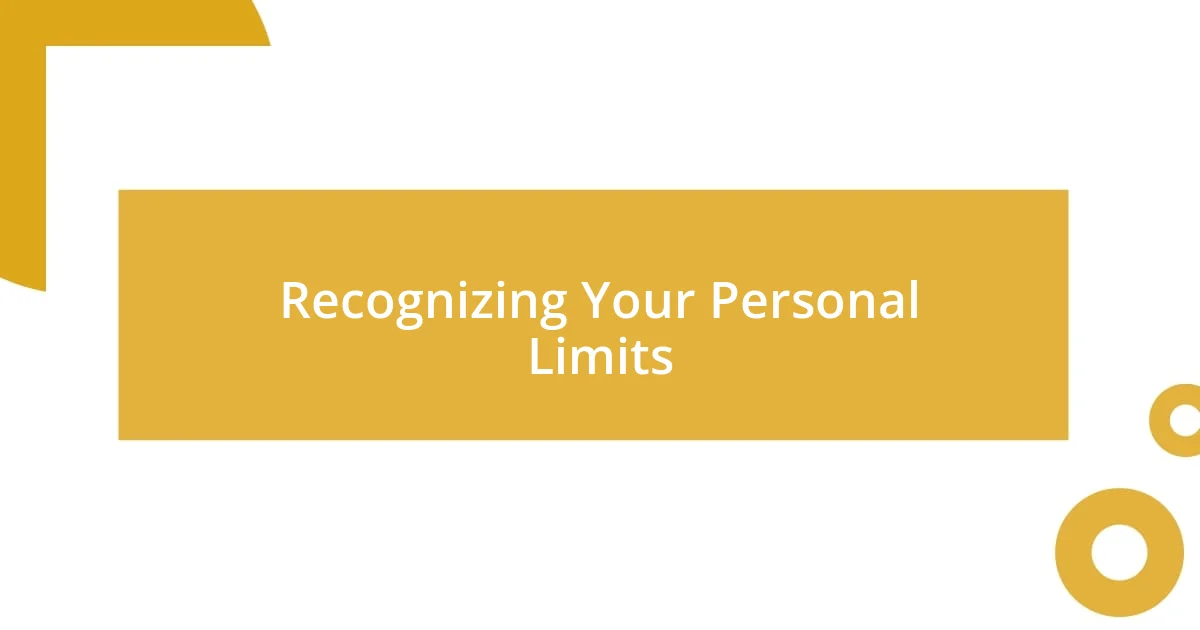
Recognizing Your Personal Limits
Recognizing my personal limits has been a journey, marked by moments of discomfort and self-discovery. Initially, I often found myself overwhelmed because I didn’t notice the signs that I was reaching my limits. There were times when I’d agree to participate in social gatherings, only to feel drained and anxious. Listening to my body—those subtle cues like tightness in my chest or a racing heartbeat—has helped me become more aware of when I need to draw the line.
Here are some signs that may indicate your personal limits are being tested:
- Physical Sensations: Notice if you experience headaches, fatigue, or muscle tension in response to certain situations.
- Emotional Responses: Pay attention to feelings of anxiety, irritability, or mood swings that arise unexpectedly.
- Social Withdrawal: If you find yourself retreating from social situations you once enjoyed, it might be a signal that you need some space.
- Rushed Decisions: Feeling pressured to make quick choices or commitments can indicate you’re stretching beyond your comfort zone.
- Discomfort in Communication: If expressing your thoughts feels increasingly challenging or overwhelming, consider this a warning that your limits are being pushed.
Reflecting on these indicators has helped me reclaim my space and clarify what I can comfortably accept. It’s a process, but learning to listen to myself has made the path to setting boundaries feel much more manageable.
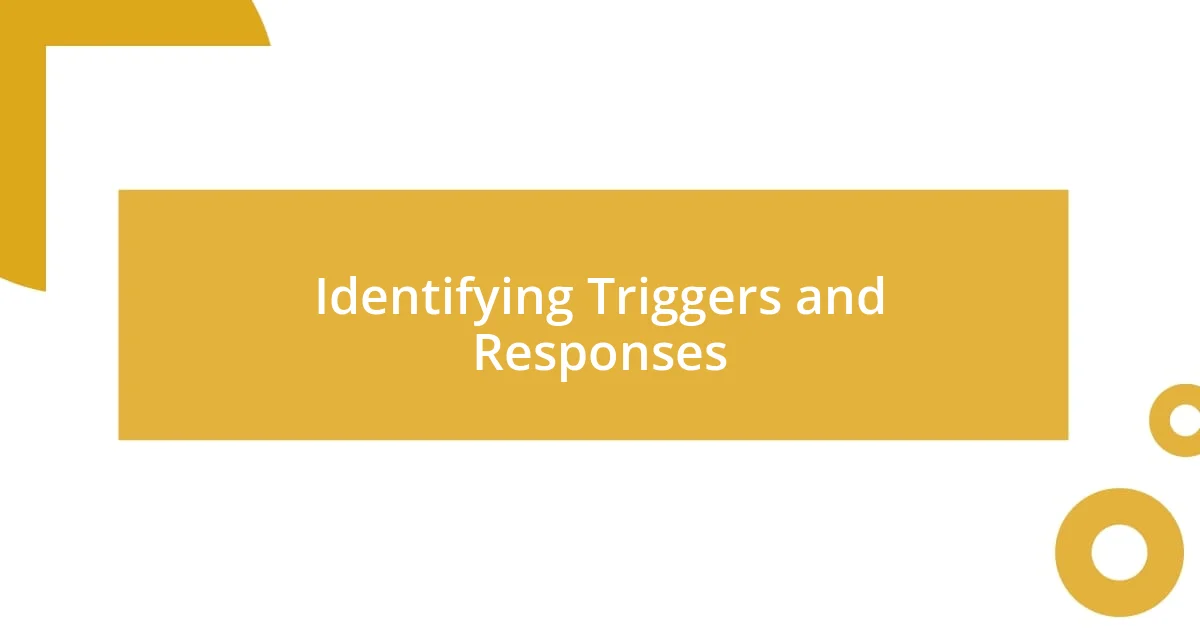
Identifying Triggers and Responses
Identifying triggers is a crucial aspect of maintaining boundaries, especially in the aftermath of trauma. I recall a moment when a particular scent unexpectedly brought back memories of a distressing situation. It was jarring; I felt my heart race and my breath quicken. Recognizing that scent as a trigger allowed me to develop a strategy for coping. Now, whenever I encounter that smell, I remind myself it’s only a memory, not my current reality. How do you identify your own triggers?
Responses can vary significantly from person to person. I’ve noticed that some days, I react calmly while other days, I become highly agitated. This inconsistency can be frustrating. It’s essential to reflect on the patterns of my reactions. For instance, I found that my anxiety tends to spike in large crowds or during unexpected changes in my routine. By mapping these experiences, I can manage my feelings more effectively. Have you established any patterns in your responses? Understanding these can be profoundly enlightening.
To support this journey, I’ve begun keeping a journal where I note my triggers and subsequent reactions. It has become an invaluable tool for self-reflection. This practice not only highlights my progress but also helps me reset my boundaries when I start to feel overwhelmed. As I monitor this dynamic, I notice I’m gaining more control over my emotional landscape, which reinforces my commitment to self-care.
| Triggers | Common Responses |
|---|---|
| Specific scents | Heightened anxiety |
| Large crowds | Withdrawn behavior |
| Unpredictable changes | Frustration or anger |
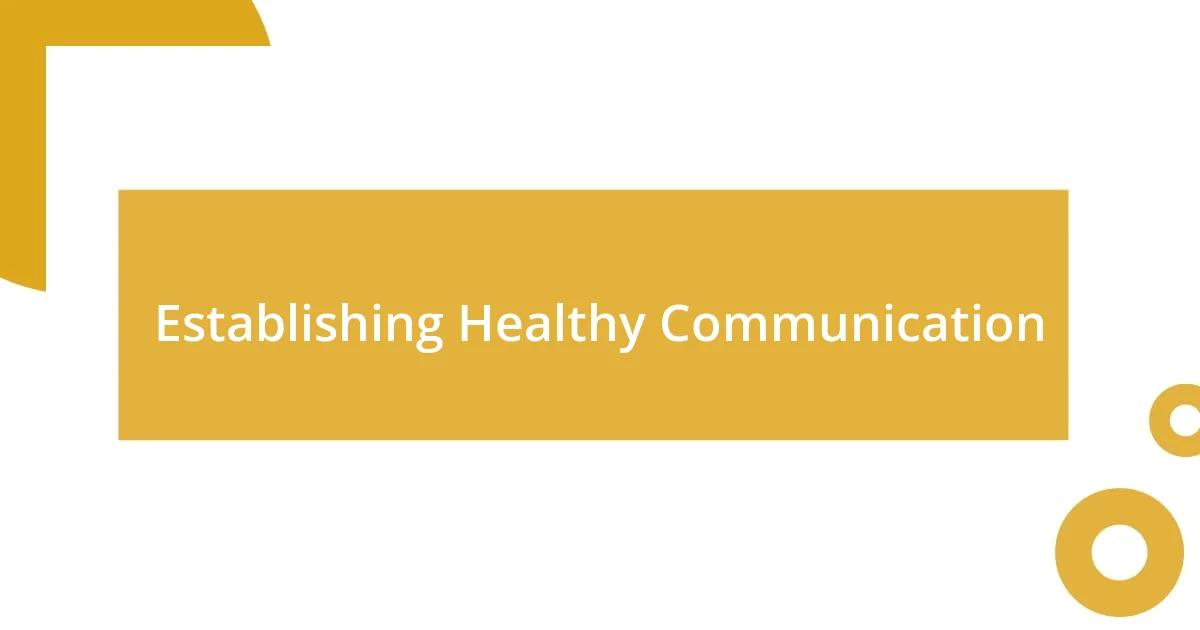
Establishing Healthy Communication
Establishing healthy communication is vital for maintaining boundaries. I remember when I first started speaking openly about my needs after trauma. It was nerve-wracking, but I realized that clear communication helped others understand where I was coming from. Have you ever felt silenced in a conversation? I have, and it’s been a challenge to break that habit. By being transparent about my feelings and needs, I’ve created a safer space for dialogue.
One effective strategy I’ve adopted is using “I” statements. Instead of saying, “You make me anxious,” I express it as, “I feel anxious when our plans change last minute.” This shift not only lessens blame but also invites a more constructive response. When I made this change, I noticed a tangible difference in how others reacted. It transformed our discussions from defensive to collaborative. How might expressing your feelings differently change your communication with others?
I also prioritize setting aside time for these conversations. Whether it’s a quiet coffee date or a phone call, creating a dedicated space allows me to express myself without distractions. During one of these moments, I shared my thoughts with a close friend, and surprisingly, they opened up about their own struggles. It reinforced how communication can foster connection even after trauma. How do you create your own safe spaces for sharing?
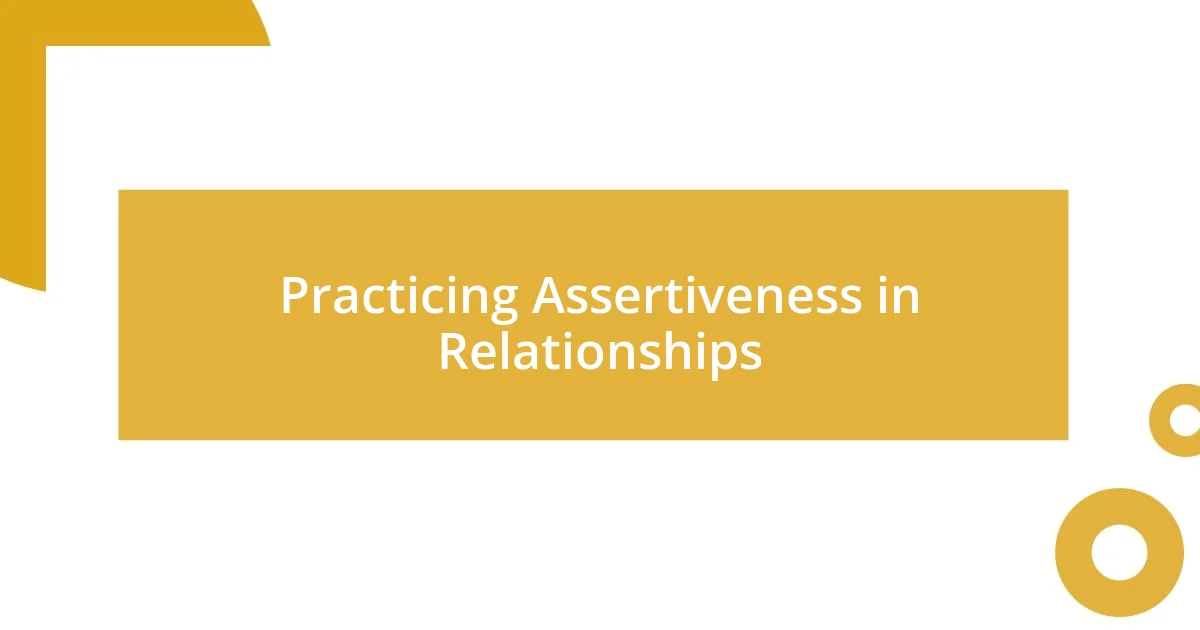
Practicing Assertiveness in Relationships
Practicing assertiveness in relationships has been a game changer for me. I remember a time when a friend abruptly canceled plans, and instead of withdrawing, I decided to express my disappointment. I said, “I felt really let down when our plans changed.” Surprisingly, my friend responded with understanding. Have you ever shared how a change in plans made you feel? Often, the simple act of voicing our feelings creates a pathway for deeper understanding.
I’ve also learned the importance of being clear about my boundaries. One evening, a family member made a comment that felt intrusive, and instead of brushing it off, I gently said, “I prefer not to discuss that topic.” It wasn’t easy, but standing firm in my needs made me feel empowered. This assertiveness can be scary, but it also builds trust. How does expressing your boundaries affect your sense of safety in relationships?
In my experience, practicing assertiveness also means being open to feedback. For instance, after a heartfelt conversation with a colleague, they shared how my directness surprised them initially. I realized that my approach encouraged an openness I hadn’t expected—creating an environment where we could both grow. It got me thinking: How might embracing constructive feedback strengthen your relationships? By being assertive, we not only stand up for ourselves but also pave the way for more honest exchanges with others.
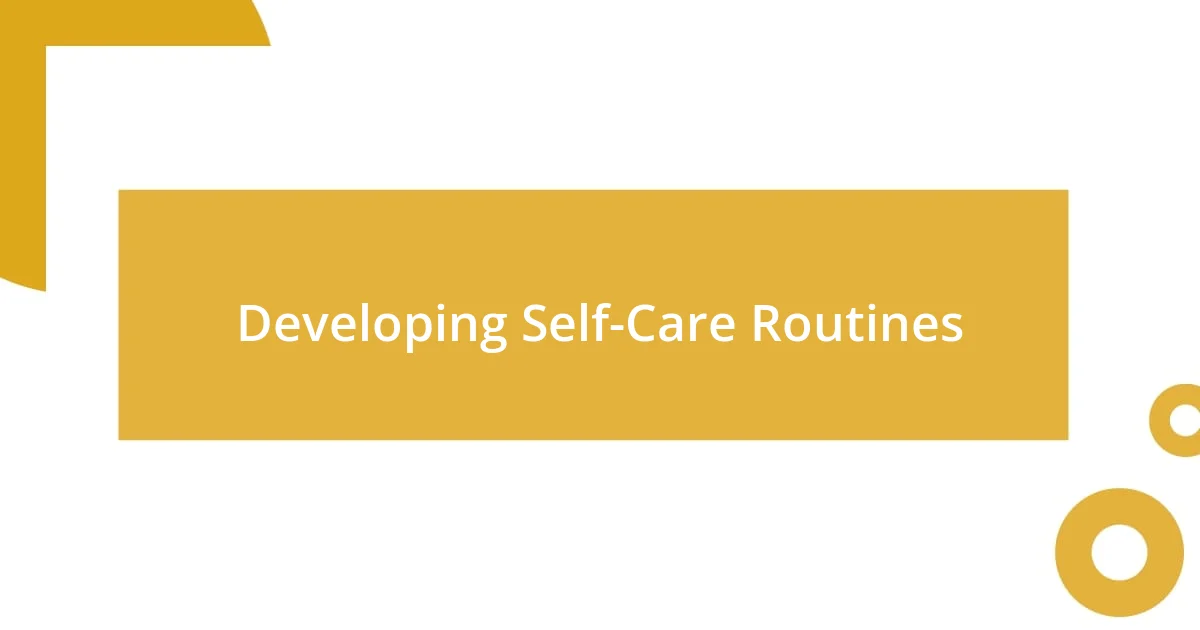
Developing Self-Care Routines
Developing self-care routines has been a crucial aspect of my healing journey. I remember the first time I carved out a few quiet moments just for me. At first, it felt indulgent, but soon I realized those moments of reflection became a sanctuary for my mind and body. Have you ever experienced guilt for prioritizing your own needs? I learned that self-care is not selfish; it’s necessary for rejuvenation.
Incorporating physical activity into my routine has made a notable difference. Initially, I was hesitant to exercise because it felt overwhelming. Then, I decided to take short walks in nature, which helped me connect with my surroundings while clearing my mind. Each step became a small victory, reminding me of my strength. Do you have a favorite way to move your body that brings you joy and comfort?
I also make it a point to cultivate mindfulness practices, like meditation and journaling. I’ve found that writing down my feelings allows me to process emotions that might otherwise feel too heavy. During one particularly difficult week, journaling became my lifeline—an outlet to explore my thoughts without judgment. Have you ever kept a journal? It can be a transformative experience, offering clarity and insight into your own journey.
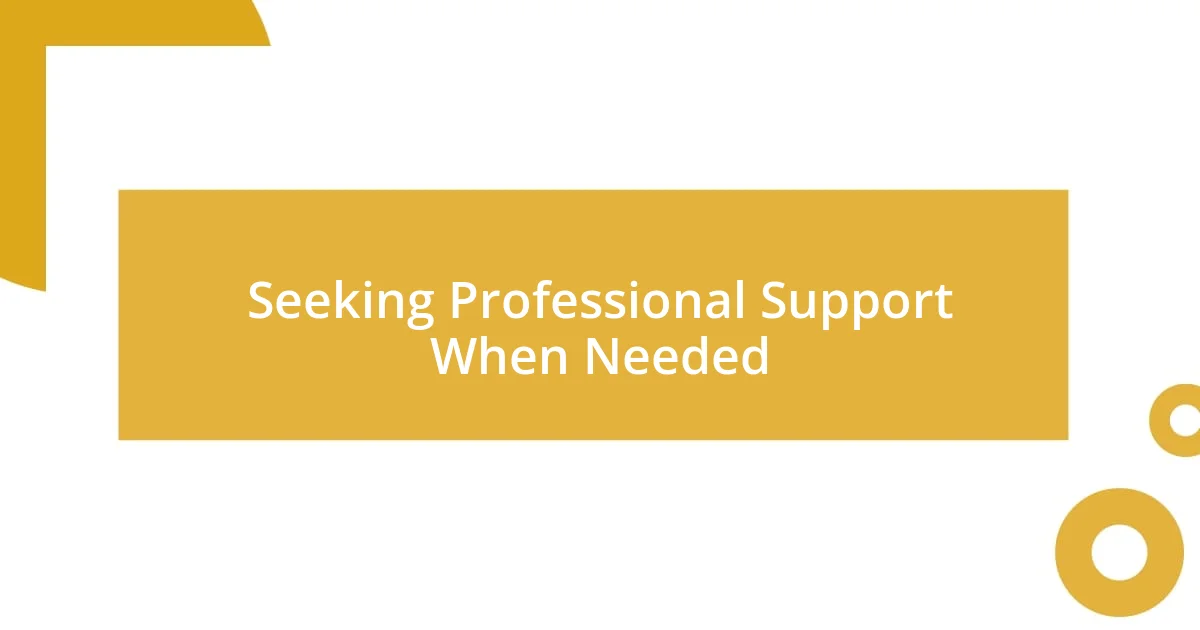
Seeking Professional Support When Needed
Seeking professional support can be a pivotal step in maintaining boundaries after trauma. I still recall my first therapy session; I walked in feeling uncertain but left with a sense of relief. The therapist helped me unpack emotions I didn’t even realize I was holding onto—have you ever felt a weight lift just by sharing your story? Knowing I wasn’t alone in my experiences gave me the confidence to establish healthy limits in my life.
In my journey, I often found that therapy wasn’t just about addressing past traumas but also about learning practical coping strategies. For example, my therapist guided me through visualization exercises that helped reinforce my boundaries during uncomfortable situations. I remember vividly the first time I used these techniques in a triggering environment; it felt like a powerful shield, protecting my emotional space. Have you explored any techniques that help you feel grounded?









